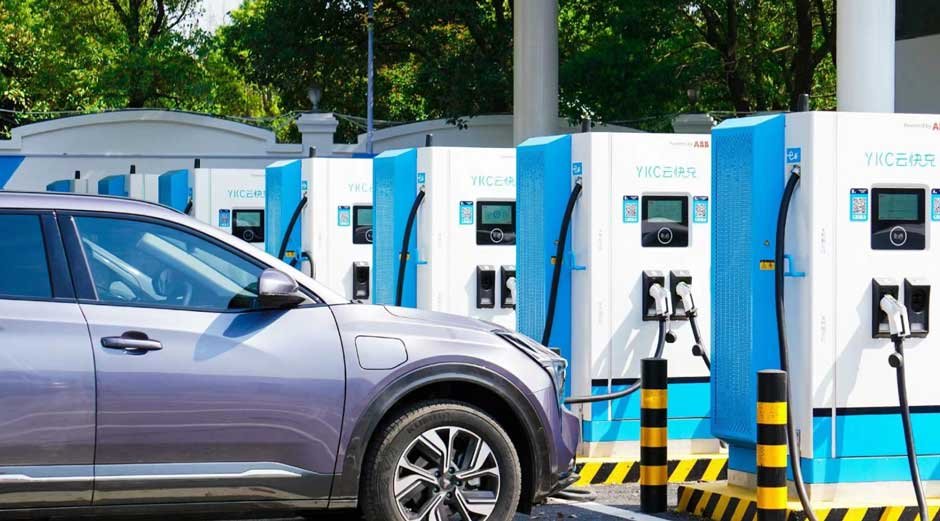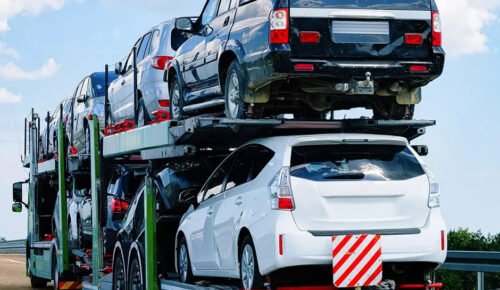Why EV Charging Matters for the Modern Landscape
The automotive industry is undergoing a groundbreaking shift as electric vehicles rise in popularity and necessity. This transformation is driven by consumer demand and ambitious climate targets set by governments, corporations, and cities eager to reduce emissions and promote cleaner air. As a result, reliable and accessible charging infrastructure has become the cornerstone of modern sustainable transportation.
According to recent news reports, the global demand for convenient EV charging solutions continues to surge as electric cars become more affordable and mainstream. Drivers considering an electric vehicle often weigh the convenience and speed of nearby charging options. The industry addresses this need by rapidly rolling out modern EVCS systems for public, workplace, and residential use. These solutions provide flexibility that suits various lifestyles, making the shift to electric feasible and appealing for daily commuters and long-distance travelers alike. By connecting more drivers to reliable power, charging technology eliminates “range anxiety” and lays the foundation for greener, more resilient cities.
How Charging Technology Is Adapting to Demand
In the early days of electric cars, public charging options were sporadic, slow, and hard to find. Stations were few and far between, often limited to basic and outdated plug types. This landscape made EV ownership a challenge for those without dedicated home charging. Fast forward to today, and the charging landscape has been transformed. Modern stations are widely distributed along busy travel corridors, residential neighborhoods, and key commercial centers. The best chargers now deliver high power levels that can add significant range in under thirty minutes, drastically reducing waiting times and making road trips and daily commutes equally convenient.
The integration of innovative technology plays a central role in this evolution. Smartphone apps and cloud platforms let users quickly locate available stations, navigate to their chosen site, and pay seamlessly. Many systems offer compatibility with various vehicles, including plug-in hybrids and fully electric models. Additionally, real-time charger monitoring and dynamic billing help optimize the use of the grid, preventing power overloads during peak hours. In commercial and multifamily settings, centralized management tools make it easier for property owners and operators to provide charging as a value-added service while collecting valuable data on energy use and driver habits. These advancements create a better user experience and drive wider acceptance of EVs as a practical solution for all.
Key Trends Shaping EV Charging Solutions
- Ultra-Fast Charging:High-speed DC fast chargers can deliver over 200 miles of range in less than 30 minutes, shrinking wait times and bringing new confidence to EV drivers planning more extended trips. This technology is essential for fleet operators, taxi services, and road trip enthusiasts, who depend on minimal downtime.
- Smart Charging Management:Modern charging solutions feature reservation systems, status notifications, and adaptive power settings—all customizable within user-friendly mobile applications. By optimizing station use and balancing demand, these innovative features improve access and help keep the electric grid stable and responsive.
- Growth of At-Home Charging:Homeowners and renters are embracing Level 2 chargers for fast, overnight charging at home, encouraged by incentives from utilities and local governments. For many, this turns an EV into a practical daily commuter, saving time and money compared to fuel stops.
- Integration with Renewables:Cleaner energy is increasingly being paired with charging. Stations powered by solar and wind, sometimes with energy storage, ensure that drivers charge their vehicles with minimal environmental impact. These renewable charging hubs signal a broader shift toward sustainable, community-centered development.
The Role of Policy and Incentives
Broad EV adoption requires more than consumer enthusiasm. Governments are rolling out financial incentives, grants, and supportive policies to boost private and public investment in charging. Tax credits for purchasing home chargers, rebates for installing infrastructure at workplaces or apartment complexes, and streamlined permitting are all designed to drive network growth.
According to the Alternative Fuels Data Center, North America’s number of publicly available charging stations has increased dramatically over the past decade. Crucially, forward-thinking building codes and public-private partnerships ensure that chargers are deployed in urban, suburban, and rural areas, closing the equity gap for drivers with limited access. These collective efforts yield benefits beyond just drivers, supporting cleaner air, better public health, and robust green job creation.
Challenges on the Road to Wide-Scale Adoption
Growth in charging infrastructure brings its own unique set of hurdles. Despite rapid expansion, availability remains inconsistent, especially in remote and lower-income communities. For many, anxiety about running out of power with no charger in sight—known as range anxiety—remains a deterrent to EV ownership. Technical issues such as incompatible connectors, unpredictable pricing, and out-of-service units can frustrate users, slowing progress toward widespread acceptance.
These issues point to a need for ongoing investment, innovation, and standardization across the sector. Ensuring every driver can access convenient, reliable charging—no matter where they live or travel—is a challenge for the industry to solve collectively. Commitment to user-centric design, recurring maintenance, and open communication with drivers will overcome these growing pains.
Flexible Charging Models for Fleets and Public Use
Flexible charging solutions are popping up everywhere, responding to the needs of commercial, public, and private drivers. Corporate and delivery fleets increasingly rely on dedicated charging hubs, which maximize vehicle uptime and reduce operational costs. These setups are monitored with advanced software that enables scheduling around shifts and optimizing charging based on the cheapest electricity rates. Large retailers, shopping centers, and hotels are also joining the movement, providing charging as an incentive to draw customers and encourage more extended visits.
For drivers lacking home charging access—such as apartment dwellers—subscription services offer “roaming” capabilities across multiple networks and charging points, making EV convenience a reality in dense cities. This diversification ensures that charging is not just a perk for homeowners or corporations but a service available to everyone.
Innovations on the Horizon
Looking ahead, exciting innovations promise to revolutionize further how electric vehicles are charged. Vehicle-to-grid (V2G) systems, for instance, are being trialed globally and could soon enable cars to serve as energy sources by returning electricity to the grid during periods of high demand, effectively transforming vehicles into parts of the energy ecosystem.
New charging formats, such as wireless charging pads embedded in city streets, are in the early stages of deployment and may soon offer cable-free refueling for idle vehicles. Other advancements include solar canopies that power cars and provide shade, and AI-driven platforms that predict optimal locations for new station installations. Each breakthrough accelerates the industry’s transition toward sustainable, user-centered transportation networks.
Empowering a Greener Future, One Charge at a Time
As electric vehicle technology matures, robust and innovative charging infrastructure will continue to play a vital role in the widespread adoption of EVs. From ultra-fast chargers on highways to solar-powered hubs in city centers, each evolution increases the convenience and accessibility of clean travel. Individuals, businesses, and governments all share responsibility for supporting this shift, whether by choosing electric mobility, investing in charging solutions, or crafting innovative policies.
By staying updated on technology trends, supporting equitable access, and advocating for continued collaboration across sectors, communities can foster a future where clean mobility is available to all, one charge at a time.








